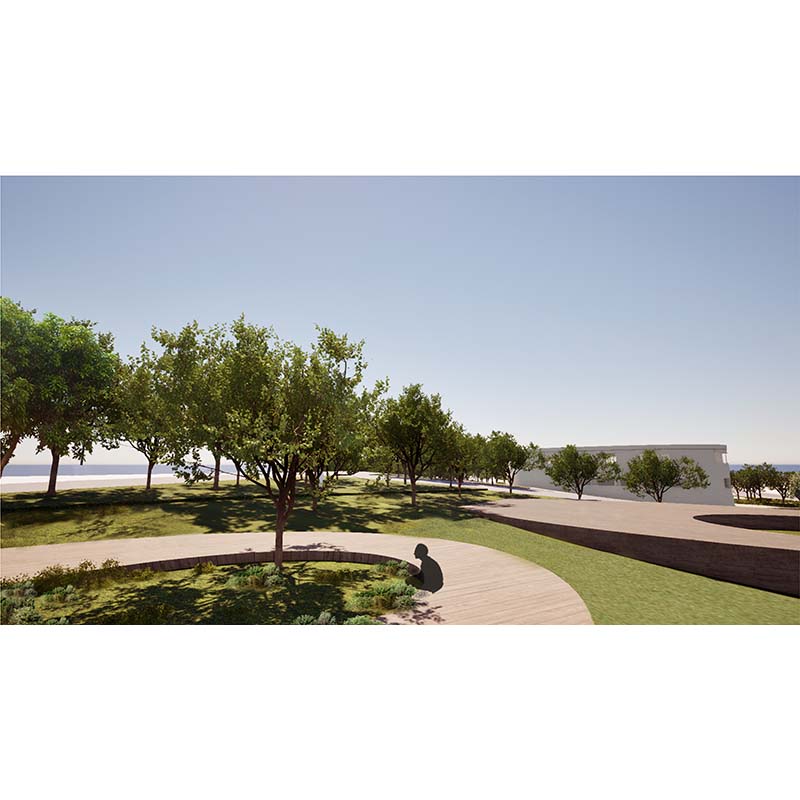

This thesis focuses on the regeneration of the riverside area in the city of Aridaia. The riverside area is located on the outskirts of the city and serves as a key point of connection with the Moglenitsa River, the provincial road, and the nearby residential zone. Additionally, a significant part of the area is characterized by dense vegetation. However, it remains unutilized, depriving the city's residents of the opportunity to connect with nature and access more activities, such as sports and cultural events. Specifically, the swimming pool and the covered market building have been abandoned for more than 15 years. Furthermore, the city lacks a library, as well as a cinema and an event space.
The design strategy followed involves the creation of different zones that aim to address these needs. To this end, in the first zone, which connects with the bus terminal (KTEL) and the schools, the following buildings are introduced: a library, the Municipal Water and Sewerage Company (DEYA), and a swimming pool. The covered market building, which is currently partially used as a bus terminal, is repurposed and divided into two functions: a bus terminal and a cinema. A key aspect of the proposal is the enhancement of the area's natural wealth. For this reason, pathways, plantings, flower beds, and some shelters are introduced. The regeneration also includes agricultural cultivations, which are of great importance to the city and the surrounding villages, as agriculture is a major occupation for the residents, as well as sports fields to promote athletic activities.
The choice of curvilinear and organic forms, both in the buildings and the pathways, was made to create a landmark in the city and emphasize the natural flow and fluidity that stem from the river and the rich vegetation of Almopia—elements that are currently lacking within the urban fabric. The area was treated as an extension of the “Dasaki” park, which, despite being located outside the urban core, serves as a place of relaxation and a vital green space for the residents.
Supervisor: Manolidis Kostas
Reference Number: 1116
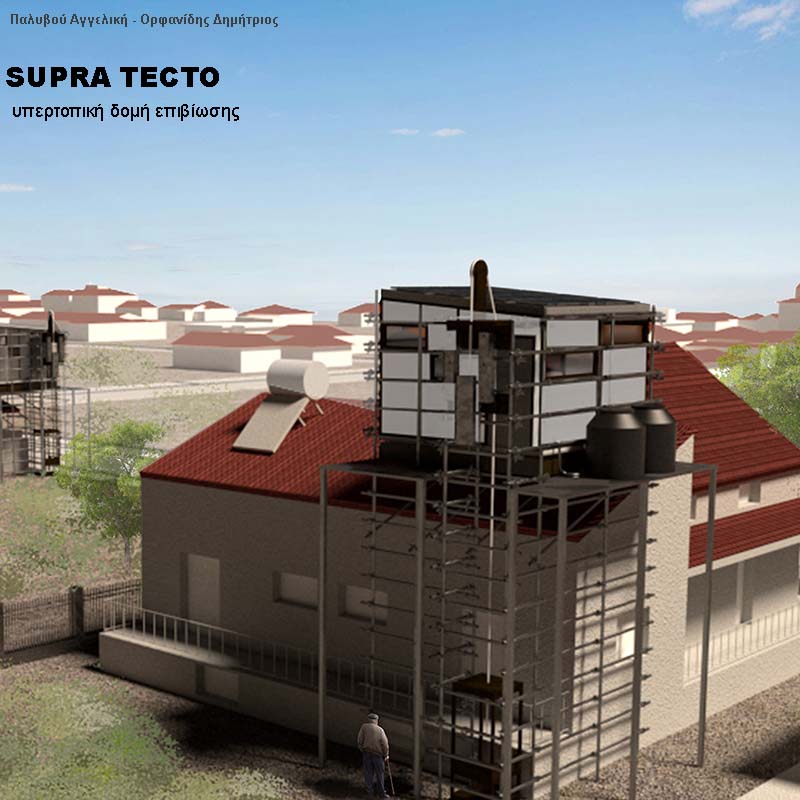

The flood disaster that occurred in the areas of Karditsa and Palamas in the Thessalian Plain in September 2023 highlighted the need for sustainable solutions to address future risks. Climate change threatens the balance between the natural and built environment, raising concerns about the safety and productivity of the region. Such events impact residents, “demolish” material goods, traditions, dreams, and connections to a place, often leading to residential and spatial deadlocks.
The spatial planning of human settlements must be re-evaluated to implement new, flexible, and holistic strategies. This includes relocating each household to a safer point within its own home. In this way, alternative social and economic models can be created, involving partial relocation without alienation. The idea of ‘supra tecto’ aims not to perpetuate a temporary condition but to integrate local practices, architectural and non-architectural approaches, traditions, and the needs of daily life into modern reality. The settlement of Palamas in the Karditsa region is used as a case study for applying similar solutions to the conditions of extreme climate change.
The question remains: how can an "urgent" structure transform the situation quickly, effectively, and as painlessly and discreetly as possible for the individual? A proposed solution involves constructing a structure above the roof of each house. It is made of lightweight materials and can be easily assembled like a kit. This emergency structure is supported by scaffolding and has the capability to float in the event of a major flood.
Supervisors: Micocci Fabiano, Kosma Anthi
Reference Number: 1119
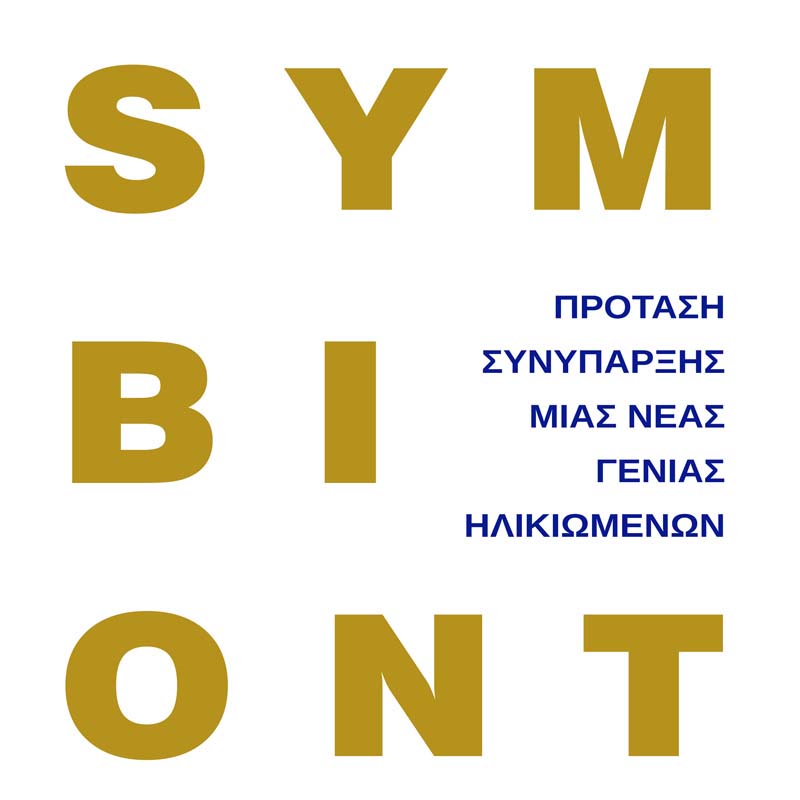

The work entitled “Symbiont: Proposal for the coexistence of a new generation of seniors” concerns the reuse of a former hospital on the seafront of Thessaloniki that has been abandoned for over ten years. The aim of the design is to understand the needs and practical problems faced by elderly people. Through their own wishes, a building is designed that includes, among others, uses such as housing, a café, engaging in manual activities and social interaction of people of different ages. It is also made open to the public, providing basic medical services and a physiotherapy and recovery area. The residents and users of the building have the opportunity to choose the amount of time they will spend in it while it serves the daily needs of individuals of younger age, providing freshly cooked food by its users or its staff. The idea for its design was to create a multi-space where parallel activities can take place and it will be open to both the elderly and the younger ones with the main operating principle of caring for and empowering local communities. This way, older people will remain active and will be offered a more dignified living while being motivated to participate in peer groups and meet new people by doing activities that interest them.
Supervisor: Gavrilou Evelyn
Reference Number: 1113
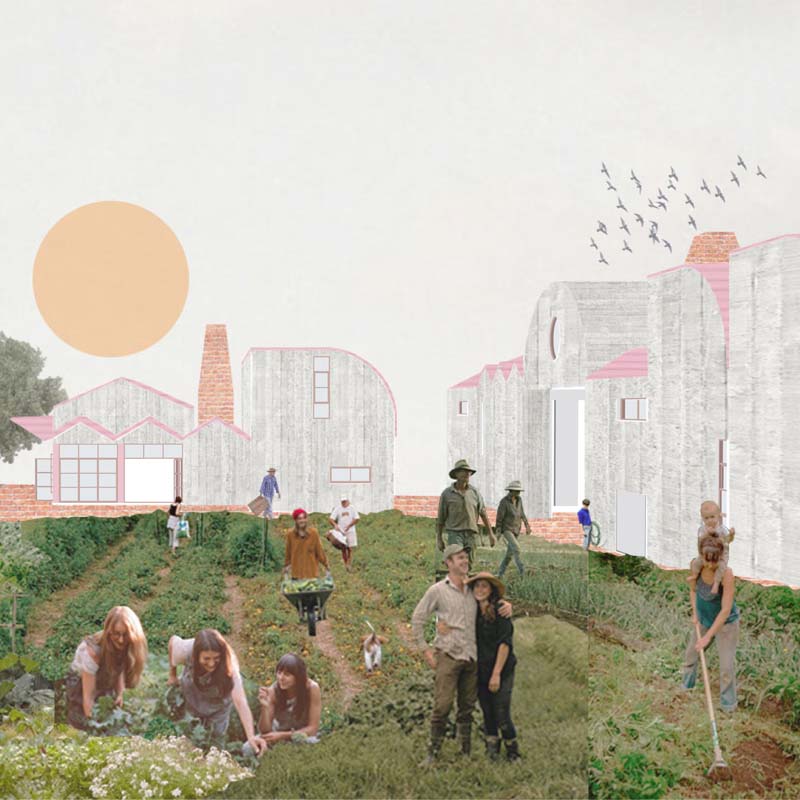

In continuation of the research project titled "The survival of rural past within the domain of the settlement landscape: The example of Thermi," this thesis explores the design of a market-square within the expansion area of Thermi, conceived as a self-managed public multi-purpose space.
The central function of this space revolves around the preservation of existing crops and the cultivation of new ones within its grounds. These crops will be maintained by the members of the space’s management collective, stored on-site, and subsequently used for public cooking activities. The products of this process will either be sold at an open-air market within the square or consumed as part of communal dining and celebratory gatherings. Surrounding this core function, both open and enclosed spaces will be made available to accommodate collective activities.
The project aims to establish a public space that enables residents to engage in community-driven and collective action, allowing them to participate in decision-making and self-organization within the public realm. This challenges the prevailing association of open space and recreation with consumption. Furthermore, the creation of the square will prevent future private construction on the site, preserving it as a zone of resistance against unchecked urban development.
Supervisor: Micocci Fabiano
Reference Number: 1100
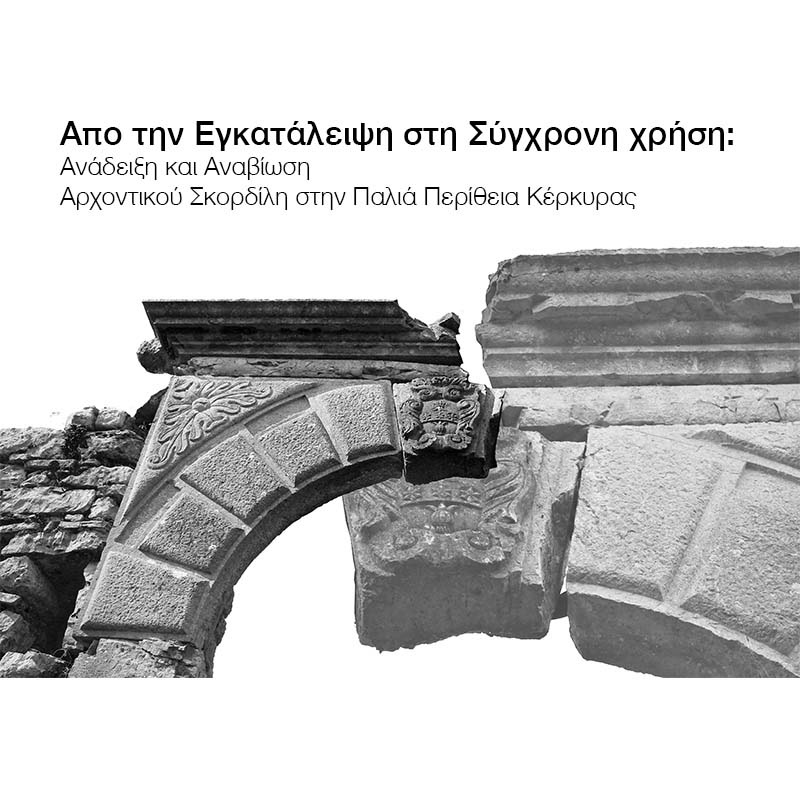

The aim of the present dissertation is the renovation of the Skordilis mansion which is located in Old Perithia, North Corfu and the re-use of the building as a Corfiot History Centre. The building is a landmark, a place of great sentimental value and part of the island’s cultural heritage. It was used as a mansion and after some alterations it became the village’s primary school. The two-storey building is surrounded by a garden which used to be protected by a stone fence. The only surviving part of that fence is the arch that still functions as the entrance to the garden. The arch has a lintel with the date 1712 marked on it. There is a second gate on the external staircase. Its lintel, which is now destroyed, used to have the date 1699 carved on it. The mansion is one of the oldest buildings in Old Perithia and that is proven by the design of the balcony. This preservable building has been abandoned for long and the scars of time are visible. At this point, the restoration proposal focuses on the reuse of the building as a cultural venue. Its location is ideal as it is pretty central and it is fairly close to the village’s guest houses. That means that it will be easier to organise and hold various events, exhibitions and conventions. The biggest part of the venue will be converted into an exhibition hall with permanent and temporary photography and model exhibitions related to the historic and architectural beauty of the traditional villages of Corfu. The cultural amenities of the venue include a screening room since one of the goals of this study is to connect the building’s present to its past and this chronicle can be best understood using audiovisual media. The design follows and highlights the original structure of the building instead of antagonising it. The construction products serve the same purpose and they are carefully selected. The design is based on simple routes, tunnels and halls.
Supervisor: Manolidis Kostas
Reference Number: 1114
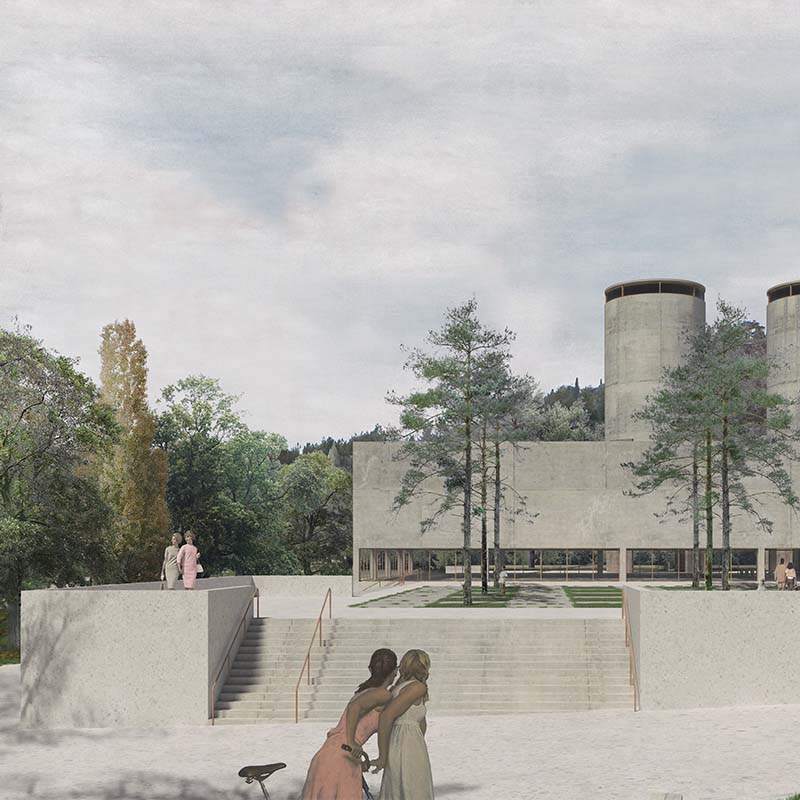

(Re)covery is a means that helps different individuals free themselves from an illness that burdens them. In the field of healthcare, based on the structure of modern society, rehabilitation often causes discomfort and difficulties for individuals - either due to social exclusion or the creation of spaces that become unsuitable for participation in the healing process.
On the other hand, health concerns - both regarding people and the environment - trouble the citizens of the city of Volos due to the presence of an industry (AGET) that degrades their quality of life through uncontrolled gas emissions. At the same time, issues related to the privatization of healthcare in our country are beginning to raise concerns, creating the need for rehabilitation from this specific neoliberal profit-driven policy.
Thus, in this thesis, the concept of rehabilitation collaborates with architecture, taking on the role of restoring a place, a building, and a society.
The transformation of the cement industry into a space for rehabilitation and well-being constitutes not only an architectural intervention but also a deeper process of restoring the landscape and the relationship between humans and their surroundings. By connecting the sea with the mountains, the natural continuity of the environment is highlighted, while water, as a healing element, restores balance to a place that has been burdened for years. Through this approach, the space is transformed from a point of decay into a field of regeneration. Issues of purification, recycling, reuse, and memory work together to bring changes to healing spaces, as well as within social and scientific frameworks.
By bridging the gap between spaces of illness and the external environment - through aesthetics, sensory experience, and the human scale - fundamental principles are established for shaping a new architecture that promotes health.
Supervisor: Manolidis Kostas
Reference Number: 1117
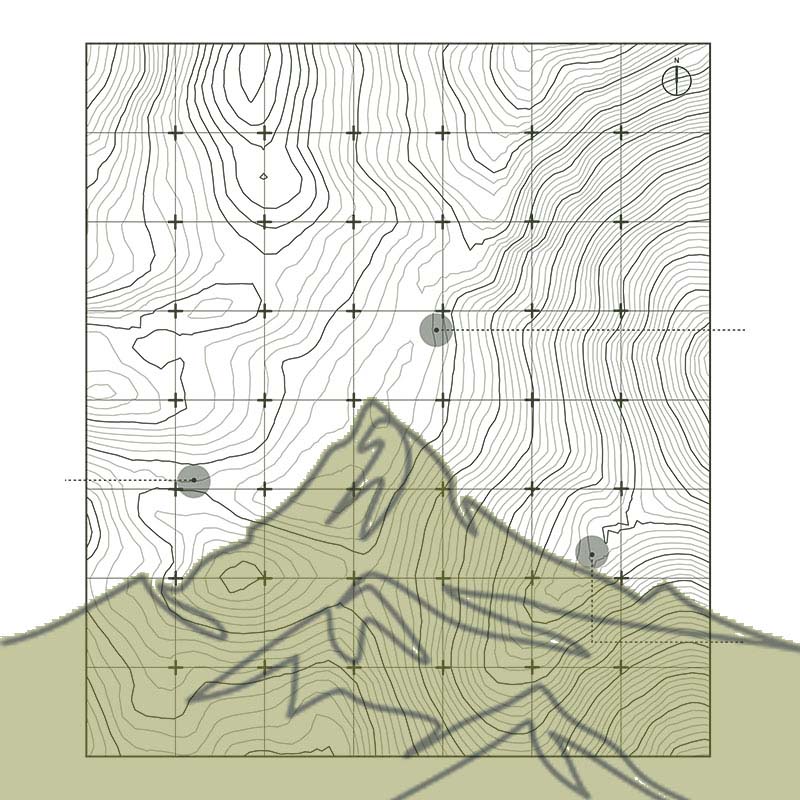

The present thesis examines and attempts the gentle architectural development at the location of Alagaina on Mount Velouchi in Greece, an area that has been granted for the activities and development of the Velouchi Ski Center. The aim is to enable year-round visitation and activity on the mountain while preserving its ecological and cultural integrity. Velouchi, part of the Pindus mountain range, is a region of exceptional natural beauty, known for its alpine landscapes, rich biodiversity, and traditional pastoral practices. However, its potential as a year-round destination remains underutilized due to limited infrastructure and seasonal accessibility challenges. This thesis proposes a sustainable architectural approach that harmonizes human activity with the alpine environment, ensuring minimal ecological disruption and enhancing the visitor experience.
The research begins with a thorough analysis of the mountain's unique geographical, climatic, and cultural context, as well as its existing infrastructure. Key challenges are highlighted, such as extreme weather conditions, ecological sensitivity, and the need to balance tourism development with the preservation of local traditions. Based on the principles of sustainable design and alpine architecture, the thesis proposes a series of low-impact interventions that integrate harmoniously into the landscape and existing built structures. These structures are designed to support a variety of activities, from winter sports to summer hiking, while also providing basic infrastructure for visitors.
The central idea of the thesis is "gentle development," which prioritizes ecological responsibility, community involvement, and resilience across seasons and over time. The thesis envisions a future where Velouchi becomes a model for sustainable tourism, fostering economic growth while preserving its natural and cultural heritage. Ultimately, this study seeks to demonstrate how thoughtful architecture can enable people to coexist with alpine landscapes in a responsible and meaningful way.
Supervisor: Trova Vasso
Reference Number: 1118
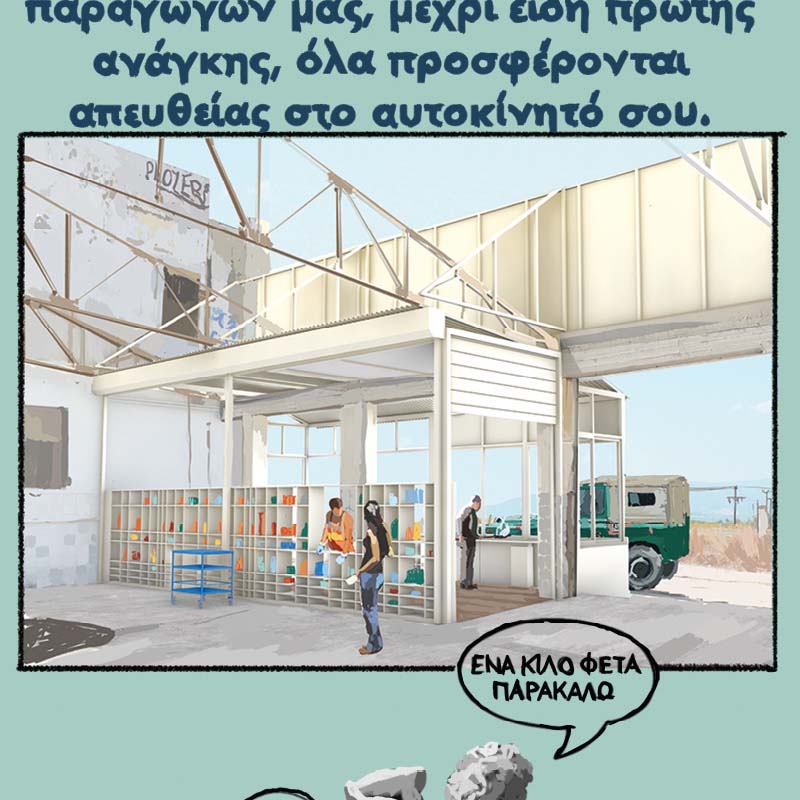

This paper examines the notion of travel and its experiential dimension within the contemporary capitalist context, which often conceives of travel as a short, executive process. It focuses on the need to reclaim a deeper, more meaningful connection between the people and the road as well as the landscape they traverse, proposing a redefinition of the concept of travel as an experience.
With the Old National Road (EO1) and the ruins that lie along it as its central axis, it proposes the design of a network of Stops, which function both as points of reflection for the traveller and as tools for the reactivation of neglected settlements that have been socially, economically and culturally undermined by the philosophy of the 'new road' and diversion.
The work combines the theory of experiential travel with the need for social, cultural and economic revitalization of these areas. The ruins are exploited as material and symbolic carriers of memory, linking the subjective imagination of the traveller with the collective need for meaningful contact with the place. In this way, a network is proposed that functions simultaneously as a cultural tool, a social intervention and an architectural proposal, in order to create a new way of perceiving travel, which is not only aimed at the destination but also at the experience of the journey.
Supervisor: Gavrilou Evelyn
Reference Number: 1121

